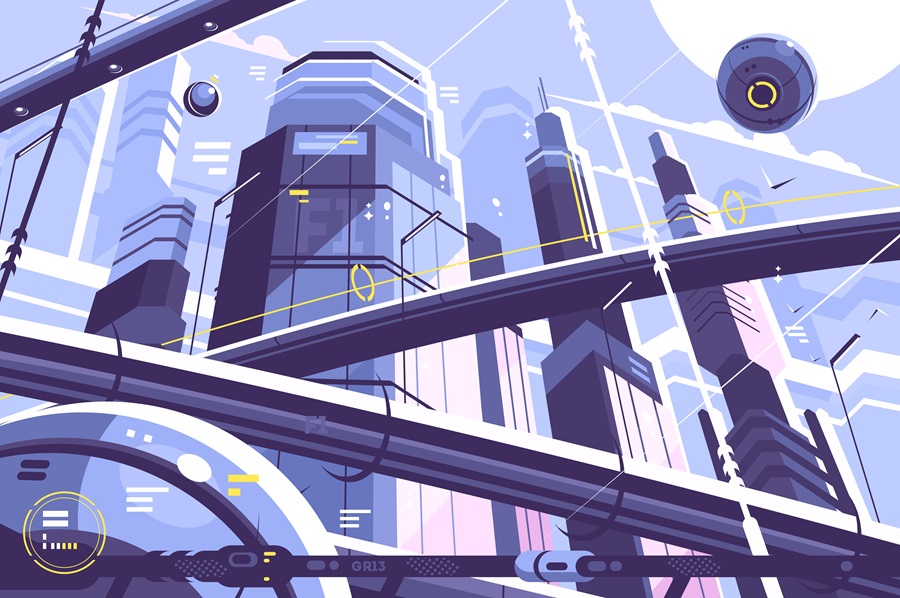Future: Difference between revisions
Fractalguy (talk | contribs) |
Fractalguy (talk | contribs) mNo edit summary |
||
| Line 1: | Line 1: | ||
[[File:Future-metropolis-futurism-techno-optimism-tescreal.jpg|thumb|The future never has old buildings]] | |||
Thinking about the future can be done on many levels. | Thinking about the future can be done on many levels. | ||
Revision as of 00:52, 25 January 2024

Thinking about the future can be done on many levels.
A robust belief system should have a vision of the future in the near term, in the mid-term (the next generation), and in the long-term (several generations from now).
A robust ethical system prioritizes the needs of the currently alive over theoretical people of the future. Crypto-bros obsessed with TESCREAL focus too much on the distant future and try to create a society that enriches themselves to help make the interplanetary space colonies of the future happy instead of their neighbors.
Curious about the future? Wait 5 minutes.
Don't even know what the future means? Read up on Time.
Planning for the Future
It is necessary that we establish a culture that values our humanity, while accepting the choices people may make in the future to alter it, in order to avoid the inevitable conflicts that will occur if we do not.
Transhumanism advocates for the adoption of technology that could fundamentally alter the subjective human experience. Some people will be excited to embrace these possibilities, while others will be reluctant. All will need to have a place in a future society. The key thing to avoid is the emergence of a new form of cybernetic or genetic racism, in either direction.
The Society of the Future
Utopian fantasies always envision the society of the future, where humanity has fully adopted the ideology being advocated and all of our problems have been solved. The desire to pursue these ends directly instead of through evolution and incremental change has been the cause of the biggest genocides in history. So metaculture will take that lesson as learned and avoid putting forth any particular vision of what form the society of the future should take. Instead, it simply advocates for new incentive structures based around the pursuit of happiness over money, science over superstition, and cooperation over competition. Where this leads humanity is for the future to reveal.
Without getting too specific, here are some goals that most of us would like to see the future accomplish.
- Poverty eliminated. Nobody should be without food or shelter when there are billionaires.
- Universal minimum standard of healthcare available to everyone.
- Balance of power between workers and ownership restored.
- Increased leisure time for everyone thanks to automation.
- Increased access to education for all without increased debt.
- Expanded sense of freedom in all aspects of law and life.
- No more war.
These goals are not left or right goals. Every human would like to see these things accomplished, with the possible exception of billionaires not liking the balance of power thing. Politics is introduced when specific solutions to these problems are proposed, especially if they disrupt existing power structures. To avoid division and animosity when discussing alternative approaches to the pursuit of these goals, it helps to re-focus attention on our shared goals.
Waiting for the Future
Technologies are being developed at a much faster pace than our culture and biology can keep up. Capitalism ensures that any new technology that gets invented is adopted globally before we have any opportunity to study its impact on our brains and society. Drugs are the only new technology that gets any real vetting in this regard, since we have to ingest them and the side-effects are obvious and potentially deadly.
If the side-effects of social media had been caused by a drug, that drug would never have been approved. It is easy to imagine artificial intelligence causing even worse damage to our brains, removing any incentive for many people to learn anything at all, and fully eroding all sense of trust in the information we see, since anything can be faked with perfect realism.
It may be necessary to create sandbox environments for new technologies to test their impact on a small population before making it available globally. This will give governments and regulators time to adapt and put the guardrails on before things have already gone off of them. This will give the culture time to adapt and create new social norms, ethics, and best practices that will keep the entire human population from falling into the next techno-addiction, and avoid unnecessary economic upheaval.
Government must also be modernized to enable it to respond to the demands of a rapidly changing technology landscape. If gridlock cannot be resolved, then bureaucratic institutions must be empowered to bypass the political process and implement the guardrails that will prevent the worst influences of new technology as soon as they can be identified.
Updating the best practices ethical recommendations of the culture is another part of this process. If there is a central authority that people look to that can easily disseminate new cultural norms regarding healthy use of new technology, they can be safely adopted more rapidly.